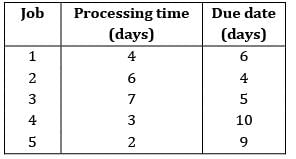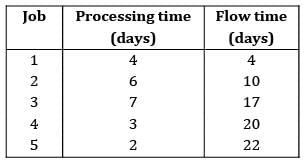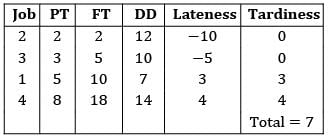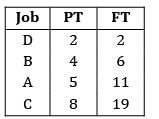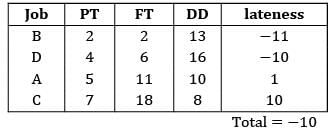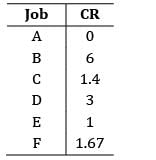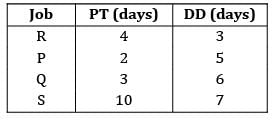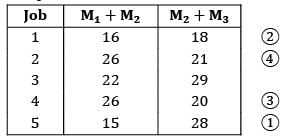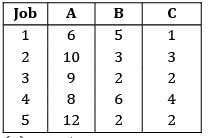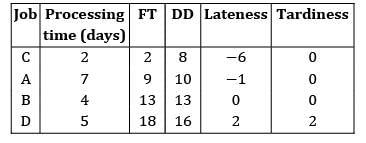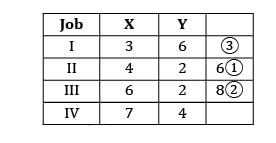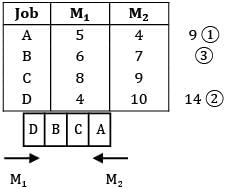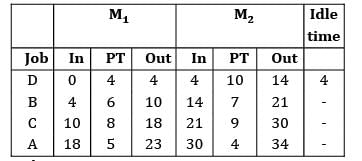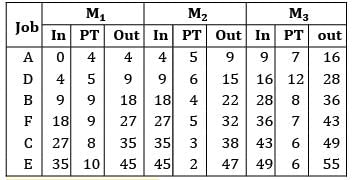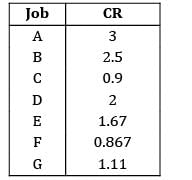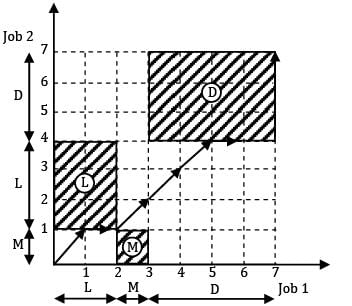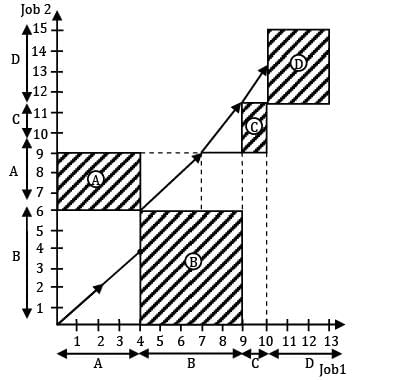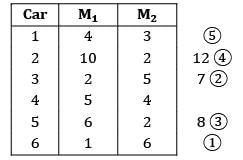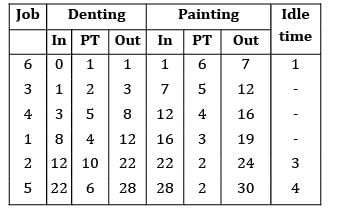Test: Sequencing And Scheduling - Mechanical Engineering MCQ
28 Questions MCQ Test Industrial Engineering - Test: Sequencing And Scheduling
In sequencing for minimizing mean tardiness and average in process inventory, the rules to be used respectively are
Which of the following rules minimizes maximum lateness?
Which of the following is not an assumption of scheduling and sequencing?
The number of possible ways for ‘n’ jobs to sequence
Which of the following minimizes the idle time of an n-jobs and 2 machine problem?
The following jobs are to be processed on a machine as per the data listed in the table below

Using SPT rule, the total tardiness is _____________
Seven jobs arrived in a sequence as given below
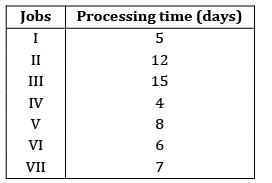
Calculate average flow time (in days) for the above jobs using SPT rule.
Four jobs has to be processed on a single machine. The details are given in following table
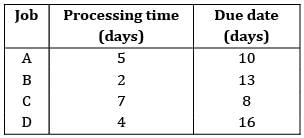
The average lateness using SPT rule is ___________
A defense contractor has six different jobs in process with the delivery requirements shown. Today is day (60) and if the contractor uses a critical ratio method for sequencing, find the sequence.
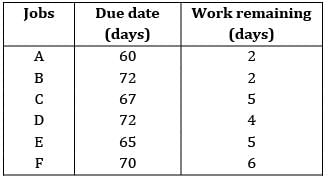
Four jobs have to be sequenced on a single facility with the objective of minimizing the maximum lateness.
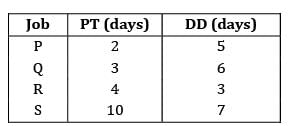
The last job that should be taken up
Consider the following data
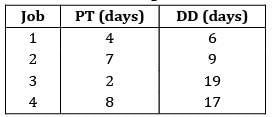
The no. of tardy jobs using SPT rule
Consider the following data for a job-shop problem

The optimal sequence for the above problem is
Four jobs has to be processed on a single machine. The details are given in the following data
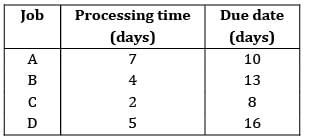
The minimum average tardiness is.
Four jobs need to be processed sequentially on two machines, first on Machine X and then on Machine Y. Each machine can process only one job at a time. The processing times in(hours) are given below
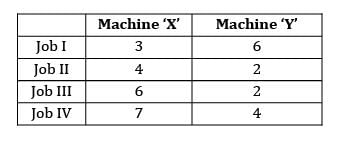
The make span of the jobs is ____________
Consider the following data
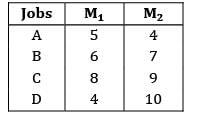
What will be the earliest time that B can be delivered to the customer?
Consider the following data
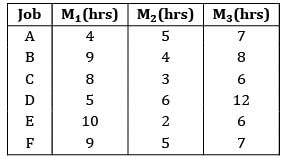
The optimal sequence using Johnson’s rule is A − D − B − F − C − E. Find the make span.
The todays date in a production calendar of an industry is 175. Sequence the jobs listed below by critical ratio rule and also find the number of jobs that are behind the schedule.
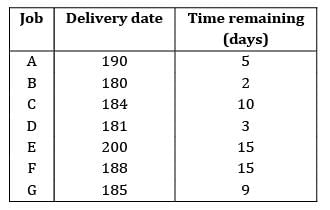
Consider the following 2 job and M-Machine problem
Job1 Lathe (2 hours) → Milling (1 hour)→→Drilling (4hours)
Job 2 Milling (1 hour)→ Lathe (3 hours) → Drilling (3 hours)
Find the make span.
Using graphical method, determine the minimum time needed to process the two jobs on four machines
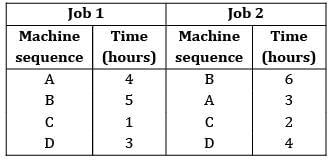
There are six cars waiting to be repaired at a car repair shop. Each car has first to be dented and then painted. The estimated times for each car are given below
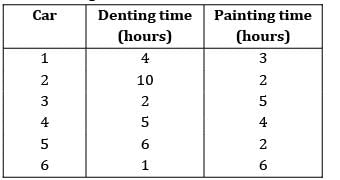
Find the total idle time for machine.
|
30 videos|40 docs|30 tests
|



